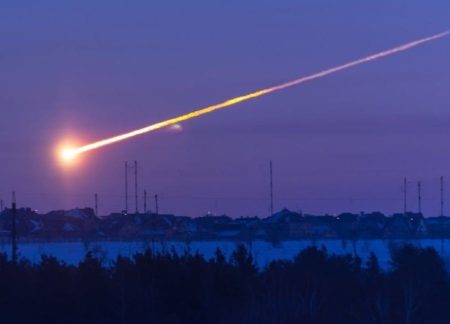May 2, 2019 – NASA, FEMA, and ESA began a week-long exercise to plan for a hypothetical asteroid strike last Monday. Designed as a drill to deal with all aspects of what this type of danger would entail, the exercise has included detection, attempted deflection, and the worst case scenario, a direct hit on the planet’s surface whether on land or ocean.
Leviticus Lewis, in charge of FEMA’s Response Operations Division, stated: “What emergency managers want to know is when, where and how an asteroid would impact, and the type and extent of damage that could occur.”
In June 2018, a U.S. interagency working group published the “National Near-Earth Object Preparedness Strategy and Action Plan,” a 10-year plan to locate and track Near-Earth asteroids (NEOs). The plan had five goals:
- To enhance NEO detection, tracking, and characterization capabilities by developing a roadmap for improving readiness and reducing uncertainty.
- To improve NEO modeling tools and simulation to mitigate impact risks.
- To develop deflection and disruption technologies including fast-response NEO reconnaissance missions to potentially hazardous NEOs before a threat arises.
- To increase international cooperation to address global NEO impact risks.
- To strengthen and practice procedures and protocols to assess and respond to NEO risks.
The exercise this week isn’t the first time NASA has been practicing to combat a potential NEO threat, but it is the first time that ESA has joined in planning and development of threat of or real impact strategies.
The current test involves an asteroid discovered 8 years ago that tracks around the Sun in a high inclination orbit compared to that of Earth’s orbital plane. The orbit is also egg-shaped. The combination of these two makes intercepting the asteroid to deflect or destroy it very difficult. This fictitious space rock in the scenario being tested is initially seen to have a 10% likelihood of striking the planet. But tracking it soon shows those likelihood to strike percentages rising. The decision to deflect requires looking at a number of options from the use of nuclear weapons to destroy it, or sending a spacecraft to deflect it.
The exercise also looked at what if the entire asteroid or a fragment struck the Earth after a deflection or destruction attempt. What kinds of emergency response would be needed to deal with the challenges that would present whether the impact occurred as an air burst, or a strike over land or water?
ESA, the European Space Agency, as its contribution to combatting a NEO strike, is developing the Asteroid Impact and Deflection Assessment (AIDA) Mission with a planned near-Earth encounter in 2022 with the binary asteroid Didymos. The plan is to send two spacecraft to Didymos, the first an asteroid rendezvous mission, the second an impactor developed by NASA and John Hopkins’ Applied Physics Laboratory. The launch of the rendezvous spacecraft would occur in 2020. The NASA-designed impactor would be launched later to arrive in 2022 and impact with the secondary Didymos asteroid at a speed of 6 kilometers (3.7 miles per second). The rendezvous mission will record the results of the impact and relay them to Earth stations for analysis. If successful the impactor will deflect the asteroid’s trajectory and allow us to track and measure the consequences of the test.








